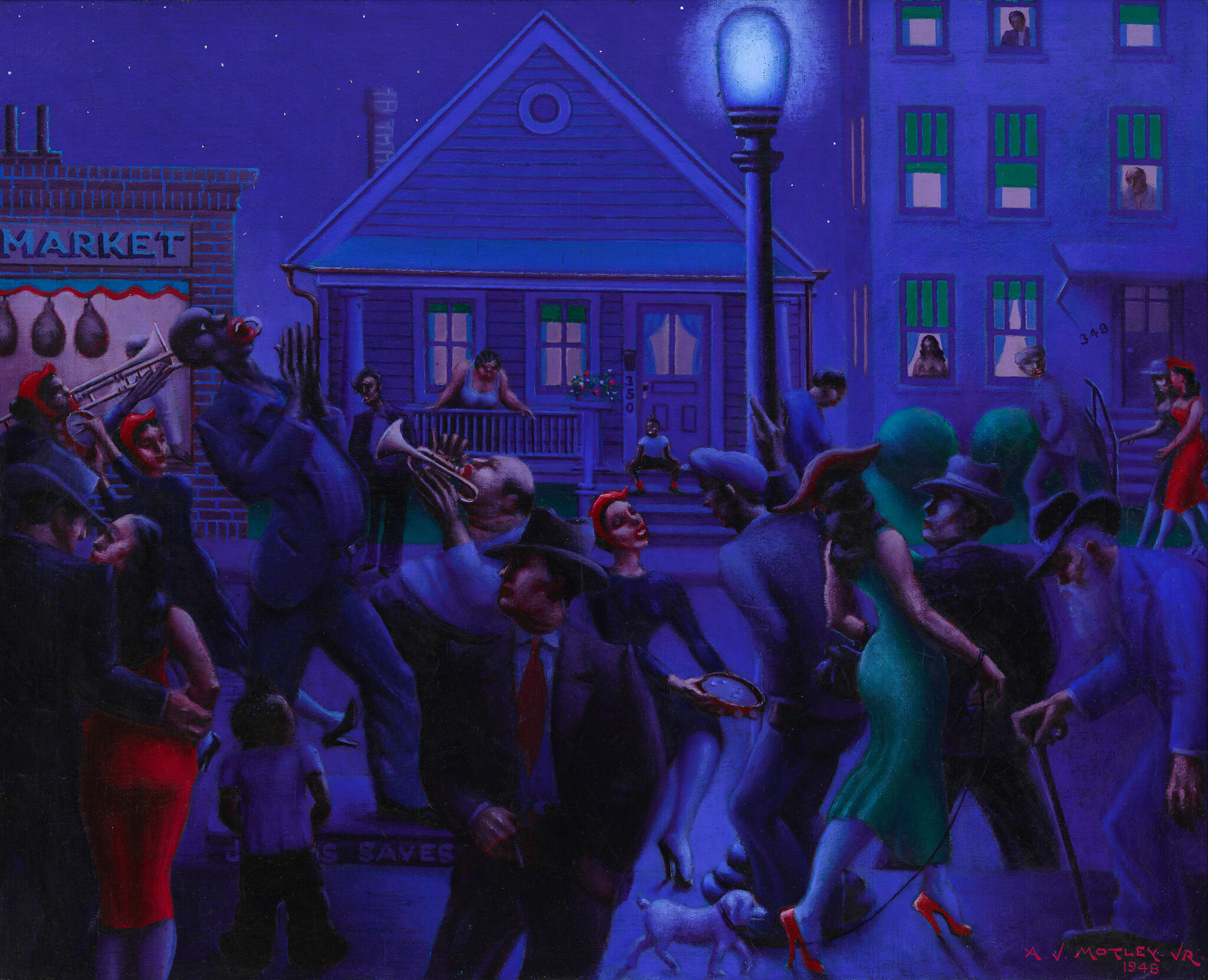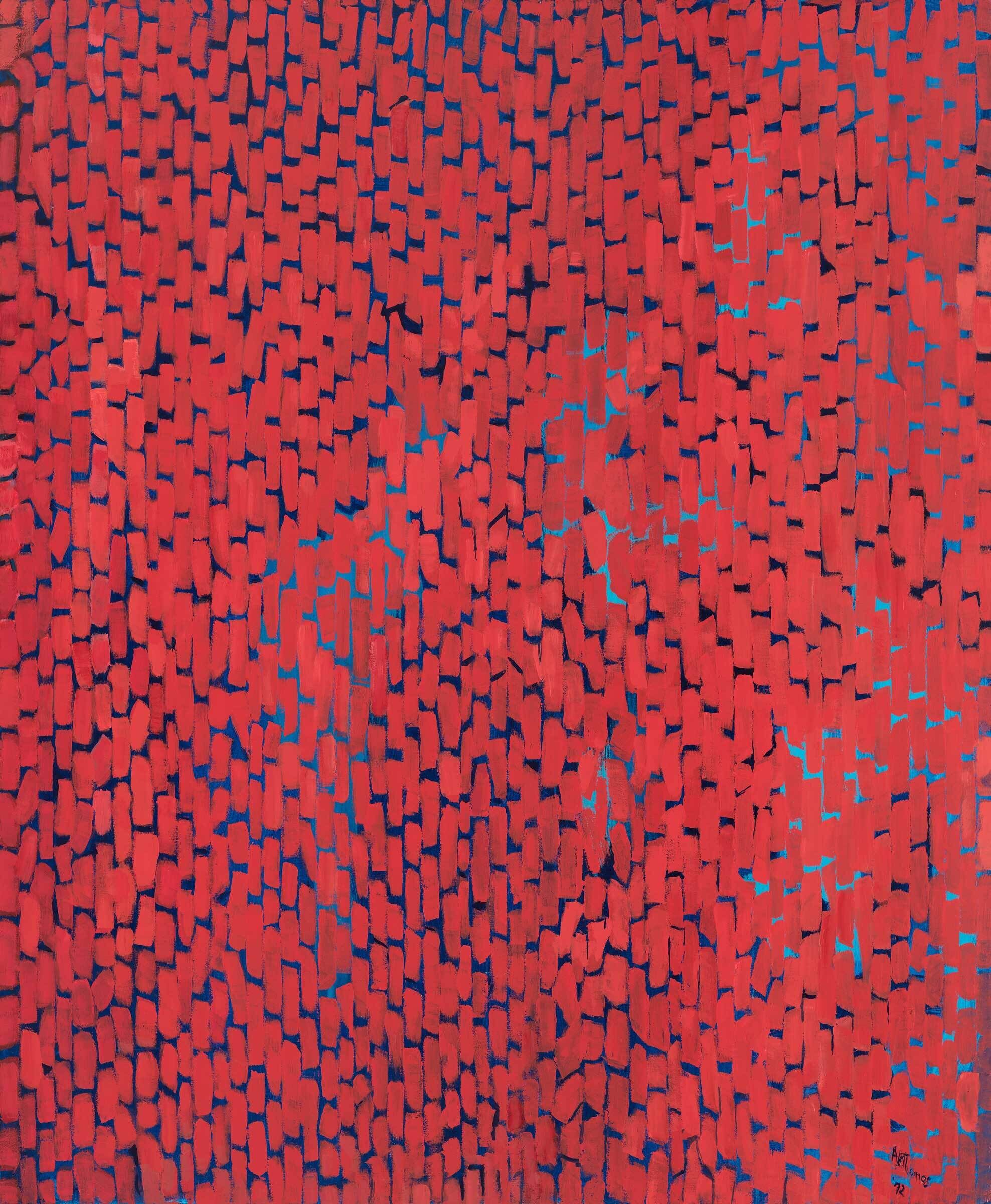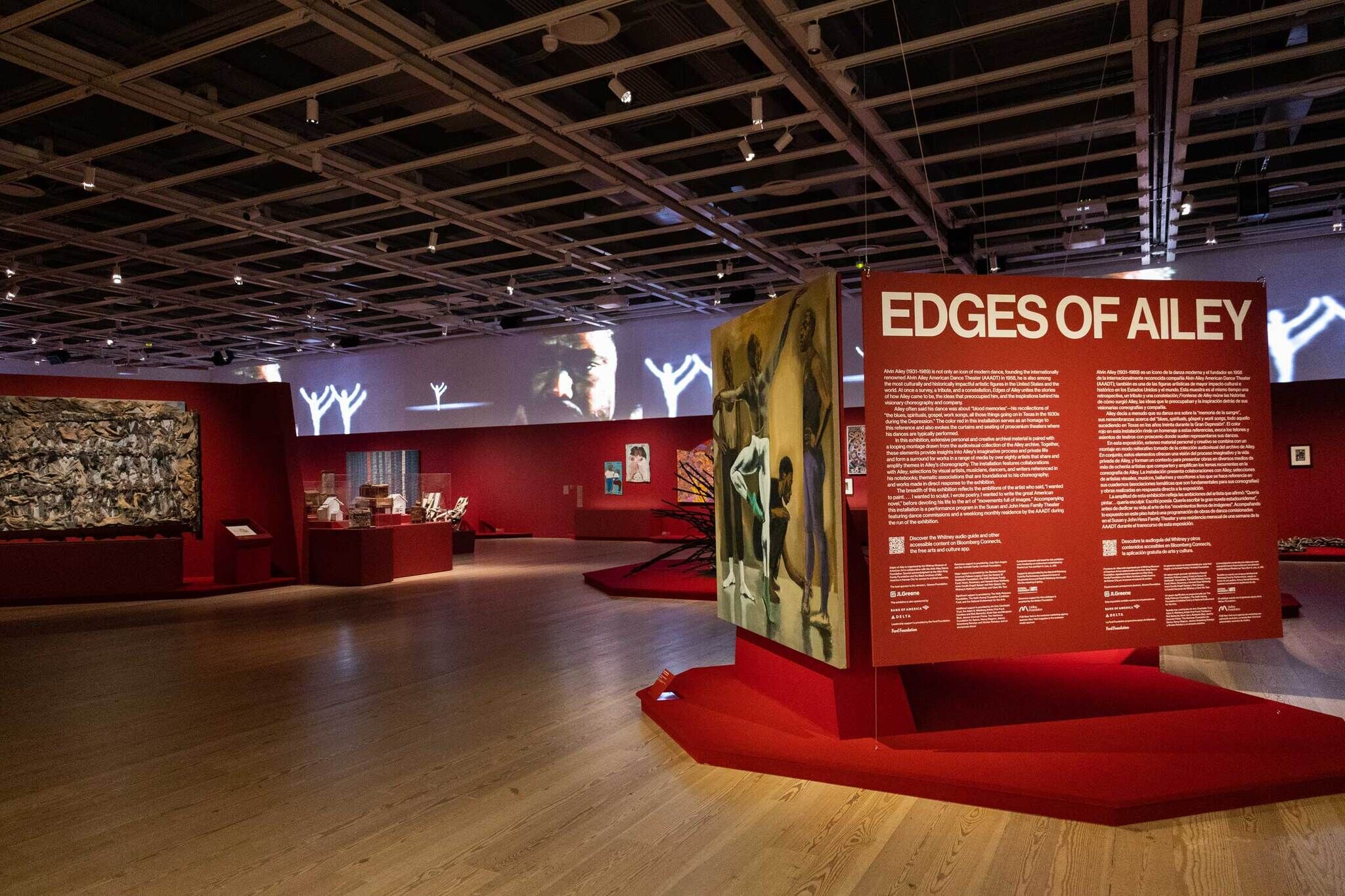Verbal Description: Archibald John Motley Jr., Gettin' Religion, 1948
Sept 16, 2024
0:00
Verbal Description: Archibald John Motley Jr., Gettin' Religion, 1948
0:00
Narrator: Gettin’ Religion, made in 1948, is a horizontal oil painting on linen. The painting is displayed in the Black Music section of the exhibit. It is a little over 2 feet tall and 3 feet wide. This night scene shows a lively cluster of people with different skin tones moving around a sidewalk. Some are playing music or strolling by while others watch from windows and a porch on the far side of the road. Some of the people can be identified as Black but not all. In the background from left to right there is a brick building labeled market, a house and an apartment building running from one edge of the painting to the other. The entire painting is bathed in a deep blue color, matching the rich blue of the night sky shown above the tops of the buildings, which is punctuated by tiny stars.
Just right of the center, a prominent street light reaches the top border of the painting and casts a bluish white glow onto the contours of bodies, faces, and the surfaces of the street and buildings. While there are no street signs that make this immediately evident, the painting is set in Bronzeville, Chicago. Motley was one of the first Black artists to attend the School of the Art Institute of Chicago. A patch of grass, a flower planter, and two round hedges give a neighborhood feeling to the scene. The people’s gender, ages, roles, and time period are strongly suggested by their clothing: men wear hats and suits, women wear knee length dresses with steep heels and children wear t-shirts and plain bottoms. The features of the people in the background are undefined yet expressive.
A central focal point of the foreground scene is a tall Black man, so tall as to be out of scale with the rest of the figures, who has exaggerated features including unnaturally red lips, and stands on a pedestal that reads “Jesus Saves.” This caricature draws on the racist stereotype of the minstrel, and Motley gave no straightforward reason for its inclusion. The artist’s ancestry included Black, Indigenous, and European heritage, and he grappled with his racial identity throughout his life. He may have chosen to portray the stereotype to skewer assumptions about urban Black life and communities, by creating a contrast with the varied, more realistic, figures surrounding the preacher. To his right on the platform there is a short, stout, light-skinned man playing a trumpet. Behind him at the left edge of the painting are two women wearing red hats and long sleeved dresses playing trombone and tambourine. Another woman dressed the same presents a tambourine with coins smiling at a man who leans against the street light.
In the foreground from left to right, the majority of the crowd moves along the sidewalk across the street from the buildings; a man stands with his arm around a woman, a child watches alone, a man with a red tie stands contrapposto with a cigarette in his hand. A woman in a singular green dress walks her small white dog. Another man creates a formal repetition with the man holding a cigarette as their profiles both face left. At the right edge of the painting an older man with a long white beard enters the frame walking with a cane.
In “Untitled” (America) and Edges of Ailey.



